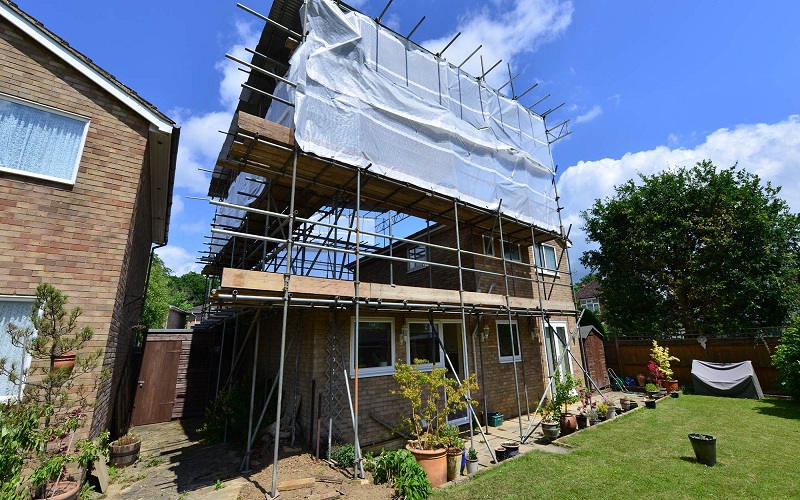
Home Extension Plans: Your Ultimate Guide to Design, Budget, and Legal Requirements
Thinking about adding more space to your home can be both exciting and daunting. Whether you’re planning to create a new bedroom, a larger kitchen, or a cosy home office, a well-thought-out home extension can make a world of difference. It’s not just about extra space; it’s about enhancing your living experience and potentially increasing your property’s value.
I’ve seen many homeowners dive into home extension projects without a clear plan, only to face unexpected challenges. That’s why understanding the essentials of home extension plans is crucial. From initial design ideas to budgeting and legal considerations, getting it right from the start can save you time, money, and a lot of headaches. Let’s explore how to make your home extension dreams a reality.
Key Considerations Before Starting Your Home Extension
Planning a home extension requires careful thought. Assess various factors to ensure a smooth process.
Understanding Local Planning Permission and Regulations
Verify local planning permission requirements. Check your council’s website for detailed guidelines. Rules vary; some areas need more stringent permits. Failing to obtain the required permissions can lead to legal issues or costly alterations later. For instance, listed buildings often have stricter regulations than newer properties.
Assessing the Impact on Property Value
Evaluate how the extension will affect property value. Consult an estate agent to understand market trends and potential returns. A well-designed extension can significantly boost property value, particularly if it adds essential features like an extra bedroom or modern kitchen. Poorly executed projects might not provide the anticipated financial benefits.
Considering Neighbours and Party Wall Agreements
Respect neighbours’ rights by adhering to the Party Wall Act 1996. Notify neighbours if the construction will affect shared walls or boundaries. This can prevent disputes and ensure a cooperative relationship. Provide detailed plans and allow time for them to raise concerns, facilitating a smoother construction phase.
Choosing the Right Design for Your Home Extension
When considering a home extension, the initial step involves selecting an appropriate design. The right design aligns with your needs and ensures the extension complements your home’s existing structure.
Types of Home Extensions
Various types of home extensions cater to different requirements. Rear extensions, for instance, extend the property into the garden area, providing additional living space. Side return extensions make use of the alleyway adjacent to the property, often found in terraced houses. Wrap-around extensions combine rear and side extension features for maximum space. Double-storey extensions increase both ground and upper floor space but require more structural considerations.
Selecting an Architect and Structural Engineer
Choosing an architect and a structural engineer is crucial for a successful project. An architect designs the extension, ensuring it meets both aesthetic and functional needs. Look for architects with a robust portfolio of similar projects. A structural engineer ensures the extension’s safety and compliance with building regulations. Hiring professionals with local experience helps navigate specific planning permissions and regulations.
Budgeting Your Home Extension
Proper budgeting ensures that your home extension project proceeds smoothly without unexpected financial hurdles. Here are key aspects to consider.
Estimation of Costs
Accurate cost estimation avoids budget overruns. Consider factors like materials, labour, permits, and design fees. For instance, a rear extension might cost £1,200 to £2,000 per square metre, including construction and finishes. Other costs include site preparation (£500-£1,000), utilities (£300-£500), and professional fees (£1,000-£2,500). Always include a 10-15% contingency for unforeseen expenses.
Financing Options
Various financing options can make your home extension more affordable. Savings are ideal for avoiding debt, but if that’s not feasible, options include:
- Home Improvement Loans: These unsecured loans, based on creditworthiness, offer quick approval and fixed interest rates.
- Mortgage Refinancing: Access equity by adjusting mortgage terms, potentially lowering monthly repayments.
- Credit Cards: Suitable for smaller projects, albeit with higher interest rates.
Choose based on your financial stability and project scope. Consult with financial advisors to determine the best fit for your extension financing needs.
Practical Aspects of Building a Home Extension
Building a home extension involves various practical aspects that can influence the project’s success. It’s vital to address these to ensure a seamless and efficient process.
Finding and Choosing the Right Builder
Selecting the right builder impacts the quality and efficiency of your home extension. Start by researching reputable builders. Check online reviews on platforms like Trustpilot and Google Reviews. Look for builders with credentials from organisations like the Federation of Master Builders (FMB). Request quotes from at least three builders to compare costs and services. Review their previous projects to gauge the quality of work. Ask for references from past clients to get insights into their reliability and workmanship.
Managing Construction Timelines and Disruptions
Effective timeline management ensures the project stays on track. Begin by agreeing on a detailed timeline with your builder, including milestones and completion dates. Regularly monitor progress against this schedule. Anticipate and plan for potential disruptions, such as weather delays. Communicate any issues promptly with your builder to avoid prolonged setbacks. Creating a temporary living arrangement helps mitigate the inconvenience caused by noise and restricted access during construction.
Legal and Insurance Considerations
Understanding legal and insurance considerations is crucial when planning a home extension. These aspects ensure that the project runs smoothly and that my property remains protected.
Building Regulations Compliance
Compliance with building regulations is mandatory. This helps ensure the extension is structurally sound and energy-efficient.
- Planning Permission Requirements: Before starting, I need to check if my project requires planning permission. Local planning authorities can provide specific guidelines.
- Structural Integrity: Any new structure must meet current building standards. This includes aspects like load-bearing walls and structural stability.
- Fire Safety Protocols: Extensions must comply with fire safety regulations. This covers fire-resistant materials and proper emergency exits.
- Insulation Standards: Ensuring adequate insulation is essential. This includes thermal and sound insulation as per building regulations.
Updating Home Insurance Policies
Extending my home impacts insurance cover, so I must review and update my policies.
- Coverage Adjustments: I need to inform my insurer about the home extension plans. This ensures the new construction is covered.
- Valuation Reassessment: The property’s value will change with the addition. An updated valuation ensures adequate coverage.
- Temporary Risks: Construction often brings new risks. Insurers may offer short-term policies to cover potential on-site damages.
- Liability Coverage: Ensuring liability coverage protects me against accidents involving workers and third parties during construction.
Taking these legal and insurance considerations into account will safeguard my home extension project, helping to mitigate risks and ensuring compliance with all necessary standards.
Conclusion
Planning a home extension is a multifaceted endeavour that demands careful consideration of numerous factors. It’s essential to grasp the intricacies of design, budgeting, and legalities to ensure a seamless process. By staying informed about local planning permissions and understanding the potential impact on property value, you can make well-informed decisions.
Engaging the right professionals and preparing for potential disruptions will help keep the project on track. Accurate cost estimation and exploring financing options are vital for managing expenses effectively. Lastly, don’t overlook the importance of compliance with building regulations and updating your home insurance. Taking these steps will safeguard your investment and ensure your home extension meets all necessary standards.


